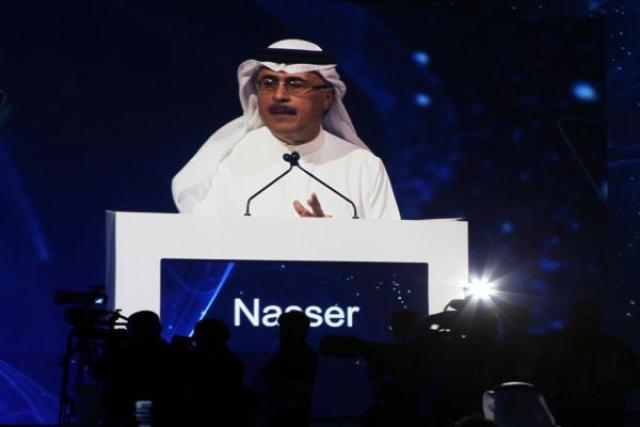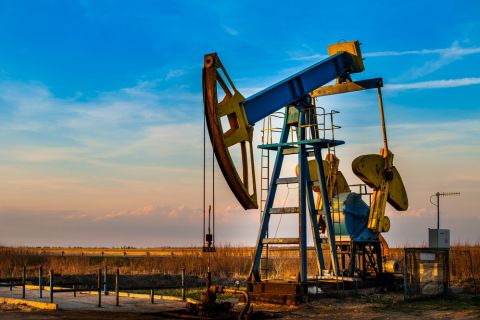
Saudi Aramco President and CEO Amin Nasser addresses the World Energy Congress in Abu Dhabi. (Source: WEC)
ABU DHABI—The oil and gas industry is at a turning point which needs regulators to be policy holistic and technology agnostic, according to Saudi Aramco President and CEO, Amin Nasser, who was addressing attendees of the 24th edition of World Energy Congress on Sept 10.
Nasser said that throughout the history, the competitive edge of the industry can be summarized in four core attributes: resource abundance, safe production, reliable supply, and affordability, which now requires a fifth one. “But meeting society’s expectations of sustainable energy will require a fifth. Quite simply, our products need to be much cleaner,” he said.
The CEO also said that stakeholders should be reminded continuously that oil and gas is a global industry at the cutting-edge of science, technology, engineering, and logistics, supported by a complex, global supply chain.
“Even when we have genuine breakthrough moments, they take time and massive Investments to commercialize and rollout across the global energy network,” Nasser said. “In addition, all energy transitions take decades, with many challenges along the road.”
Nasser welcomed the growing contribution of alternative energy to the global energy mix, especially amid the raising global energy demand, but he said that many governments are adopting energy policies that do not appear to consider all the complex aspects of global energy; the long-term nature of the business; and the need for orderly transitions.
“We have already seen the impact of what I call a ‘Crisis of Perception’ on long-term investments; and if it continues supply shortfalls will follow as night follows day,” he noted. “That would hurt the competitiveness of national economies; threaten their energy security; and, potentially, create social disruptions (even in developed nations) by making energy less affordable.”
Saudi Aramco CEO said that the world can no longer afford such policy miscalculations.
“We need a major awareness campaign to remind stakeholders and energy users why oil and gas are still so essential. And since oil and gas will be at the heart of the global energy mix for decades to come, we need regulators to be policy holistic and technology agnostic. So there is plenty of work ahead of us just to sustain our traditional strengths.”
RELATED: Aramco CEO: Domestic IPO Is Primary One, Also Prepared For International Listing
The industry is currently at a turning point given the need of cleaner energy, where the industry have made progress in achieving this objective.
“For example, at Saudi Aramco, our Master Gas System has ended associated gas flaring, eliminating about 100 million metric tons of CO2 equivalent, every year since it was established in the 1970s,” Nasser said.
“Our upstream carbon intensity in the Kingdom–from well to refinery gate–is one of the lowest in the world at about 10 kg of CO2 equivalent per barrel of oil equivalent. Meanwhile, based on third party verification of our greenhouse gas emissions, our methane intensity last year was just 0.06%, which is also one of the lowest in the industry.”
This is especially important given that methane gas is 80 times more harmful to global warming in the first two decades after its release compared with CO2.
Nasser called upon industry leaders to come together around a new mission beyond their gates of making oil and gas much cleaner across the full spectrum of end-use applications, and make it priority.
He cited a range of technologies with transformative potential that Saudi Aramco currently working on. These include advanced integrated engine-fuel systems of the future, which aim to deliver greater efficiency and, at the same time, lower emissions. crude-to-chemicals, which has the potential to transform our industry with oil as a highly competitive petrochemical feedstock.
“We are also working on carbon-free hydrogen from oil-based feedstocks for use in multiple end-use applications; and we aim to be world leaders in Carbon Capture Utilization and Storage, once again turning what is seen today as a waste product—CO2—into something valuable.”
And imagine advanced materials from oil which could be used in a range of high growth industries such as construction, housing, cars, and even the electric vehicles and renewables industries, he noted.
However, this new mission is a shared industry responsibility to stakeholders, beyond generating long-term value for shareholders.
“Our concerted, accelerated, and visible response in all sectors should reflect that—especially collective investment in practical solutions,” he said.
Nasser also highlighted a number of initiatives that the industry is currently taken tackle the pressing issues such as the industry’s Oil and Gas Climate Initiative have jointly allocated more than one billion dollars to lower the carbon footprint of the energy and industrial sectors.
Other, complementary approaches, especially coalitions with partners beyond the oil and gas industry, should also be considered.
“Whatever the framework, it needs to be a comprehensive, industry-led effort, it needs to move fast, and it must articulate clear, long-term carbon management strategies that give our stakeholders sufficient confidence in our programs,” he said. “Because there is no limit to our industry’s potential if we can meet society’s demand for ultra-clean energy,” he said.
Recommended Reading
Exxon’s Payara Hits 220,000 bbl/d Ceiling in Just Three Months
2024-02-05 - ExxonMobil Corp.’s third development offshore Guyana in the Stabroek Block — the Payara project— reached its nameplate production capacity of 220,000 bbl/d in January 2024, less than three months after commencing production and ahead of schedule.
What's Affecting Oil Prices This Week? (Feb. 5, 2024)
2024-02-05 - Stratas Advisors says the U.S.’ response (so far) to the recent attack on U.S. troops has been measured without direct confrontation of Iran, which reduces the possibility of oil flows being disrupted.
Tinker Associates CEO on Why US Won’t Lead on Oil, Gas
2024-02-13 - The U.S. will not lead crude oil and natural gas production as the shale curve flattens, Tinker Energy Associates CEO Scott Tinker told Hart Energy on the sidelines of NAPE in Houston.
What's Affecting Oil Prices This Week? (March 18, 2024)
2024-03-18 - On average, Stratas Advisors predicts that supply will be at a deficit of 840,000 bbl/d during 2024.
What's Affecting Oil Prices This Week? (March 11, 2024)
2024-03-11 - Stratas Advisors expects oil prices to move higher in the middle of the year, but for the upcoming week, there is no impetus for prices to raise.






